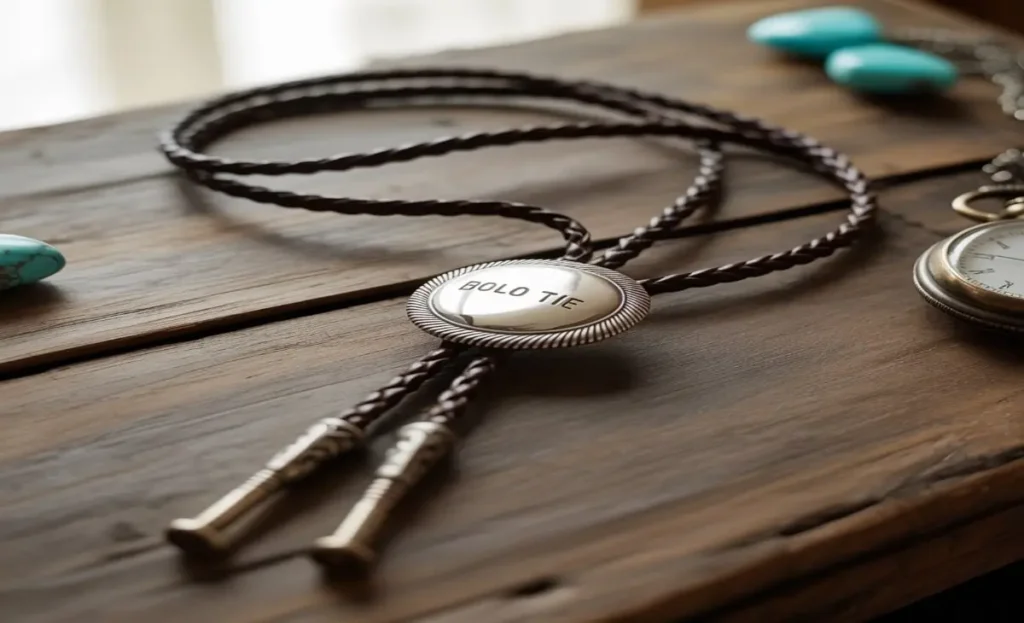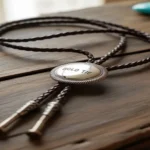The bolo tie is more than just a piece of neckwear—it’s a cultural symbol, a fashion statement, and for many, a treasured keepsake with deep meaning and impact. Originating in the American Southwest, this unique accessory has transitioned from cowboy attire to high-fashion runways, celebrity wardrobes, and everyday street style. If you’re curious about the bolo tie’s story, its styling possibilities, and how to choose the right one for you, this complete guide covers everything you need.
What is a Bolo Tie?
A bolo tie consists of a braided leather cord (or sometimes a woven fabric cord) with decorative metal tips, secured with an ornamental clasp or slide. Unlike a traditional necktie, it adjusts easily and can be worn high at the collar for a formal look or loosened for casual wear. The slide clasp is often the showpiece—crafted in silver, turquoise, onyx, or other ornamental stones—reflecting both artistry and heritage.
Origins and Cultural Significance
The bolo tie emerged in Arizona in the late 1940s, credited to silversmith Victor Cedarstaff. Drawing from Native American jewelry traditions, he designed a slide clasp to wear with braided cords and patented the idea in 1959.
The bolo tie became a recognized symbol of Southwestern pride—so much so that Arizona, New Mexico, and Texas officially designated it as their state neckwear. In Native communities, the bolo tie represents artistry, identity, and storytelling through handcrafted design.
Why the Bolo Tie is Still Popular Today
Fashion trends come and go, but the bolo tie’s adaptability keeps it relevant. Its mix of elegance and rugged charm appeals to both traditionalists and modern trendsetters. Today, you might see it paired with a cowboy hat at a rodeo, a slim-fit blazer at a business meeting, or even streetwear on a fashion influencer’s Instagram feed.
Bolo Tie Materials and Craftsmanship
The bolo tie’s uniqueness lies in its materials and handmade detailing.
- Cord: Typically braided leather or waxed fabric for durability.
- Tips (Aglets): Made from silver, brass, stainless steel, or nickel.
- Clasp: Often the focal point, crafted from metals, gemstones, or even wood.
Popular stones include turquoise for its Southwestern heritage, black onyx for elegance, and coral for bold color. Artisans may hand-engrave silver slides or inlay intricate stone patterns, turning each bolo tie into a piece of wearable art.
How to Wear a Bolo Tie
The beauty of the bolo tie is its versatility.
- Formal wear: Slide the clasp up to the collar, pair it with a crisp shirt and blazer or Western-cut suit.
- Casual wear: Loosen the clasp to mid-chest, wear it over a button-down or even a plain T-shirt.
- Creative styling: Layer it over dresses, use it as a choker, or style it with denim jackets for a vintage vibe.
Bolo Tie in Modern Fashion
High-end fashion brands have reintroduced bolo ties with minimalist slides, silk cords, and unconventional shapes. Celebrities like Post Malone, Harry Styles, and Lil Nas X have worn them at major events, making them relevant to a younger audience.
Step-by-Step Buying Guide for a Bolo Tie
Choosing the right bolo tie means thinking about purpose, design, and comfort.
- Define Your Use: Formal, casual, collectible, or everyday wear.
- Select the Cord Material: Leather for tradition, fabric for lightweight comfort.
- Pick the Clasp Design: Gemstone, engraved metal, or modern minimalistic.
- Choose the Length: Standard lengths are 36–40 inches, but shorter or longer cords can be custom-made.
- Set a Budget: Handmade artisan pieces can range from $50 to over $500 depending on materials and craftsmanship.
Best Places to Buy a Bolo Tie
- Local Artisan Markets: Supporting Native and local craftsmen ensures authenticity.
- Western Wear Stores: Brands like Wrangler and Stetson often carry bolo ties.
- Online Retailers: Etsy, eBay, and Amazon offer a range from budget to luxury.
- Specialty Jewelers: For silver- and turquoise-heavy designs, especially in Southwestern states.
Price Ranges for Bolo Ties
| Type | Price Range | Best For |
| Basic Leather Cord | $20–$50 | Casual wear, beginners |
| Artisan Handcrafted | $75–$300 | Style & heritage lovers |
| Luxury Designer Pieces | $300–$1000+ | Collectors, high-fashion events |
Bolo Tie for Men
Men can pair bolo ties with jeans and boots for a rugged look or with tailored suits for unique formal wear. In some U.S. states, it’s accepted in business attire, adding personality without breaking dress codes.
Bolo Tie for Women
Women style bolo ties as necklaces, chokers, or statement pieces with dresses. Smaller clasps and colorful cords add a chic touch, making them versatile for both professional and casual settings.
Care and Maintenance
Store bolo ties flat or hanging to prevent cord damage. Wipe metal parts with a soft cloth to prevent tarnish, and condition leather cords occasionally to keep them supple. Avoid water exposure to preserve materials.
Collecting Bolo Ties
Collectors often seek vintage Native American designs, especially those by known silversmiths. Rare stone combinations, limited editions, and older handcrafted pieces can appreciate in value over time.
Bolo Tie Around the World
While rooted in Southwestern culture, bolo ties have found global appeal. In Japan, they’re worn as casual fashion accessories, and in parts of Europe, they appear in folk-inspired outfits. Fashion-forward cities like London and Paris have seen them on street style enthusiasts blending Western and urban aesthetics.
Sustainability and Ethical Sourcing
Many buyers now prioritize ethically made bolo ties, choosing artisans who source materials responsibly and maintain cultural respect for Native traditions.
Famous Wearers of Bolo Ties
From country music icons like Willie Nelson to Hollywood stars like Sam Elliott, bolo ties have made their mark on pop culture. Even political leaders in the U.S. Southwest have worn them at official events, reinforcing their status as formal attire.
FAQs
How do you wear a bolo tie formally?
Slide the clasp up to the collar and pair with a suit or blazer for a polished look.
Can a bolo tie replace a necktie?
Yes, especially in Southwestern states where it’s considered formal neckwear.
Where can I buy authentic bolo ties?
Local artisan markets, Western wear stores, and reputable online platforms like Etsy are great options.
Are bolo ties still in style?
Yes, they are resurging in popularity thanks to celebrity influence and high-fashion reinterpretations.
What is the average price of a bolo tie?
Basic designs start at $20, while handcrafted artisan pieces can exceed $300.
Can women wear bolo ties?
Absolutely, and they can adapt the style for casual, bohemian, or formal looks.
Conclusion
The bolo tie is a timeless blend of heritage, craftsmanship, and fashion versatility. Whether you’re buying your first one for casual wear, adding a statement piece to your formal wardrobe, or building a collection of handcrafted treasures, this accessory offers endless style possibilities.
If you want a piece that tells a story, supports artisans, and stands out in any crowd, the bolo tie might just be your perfect choice.





